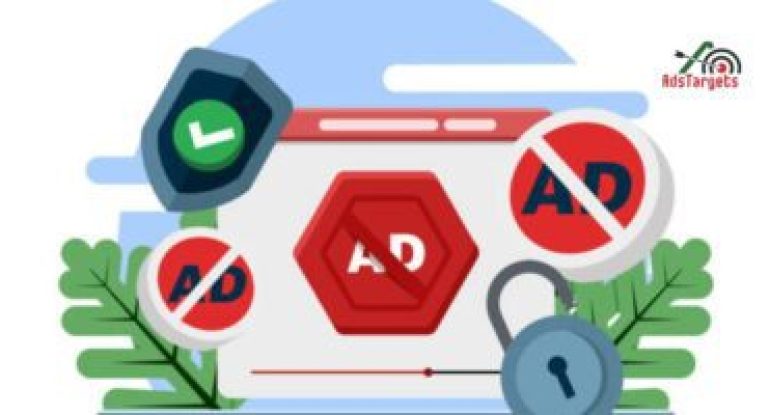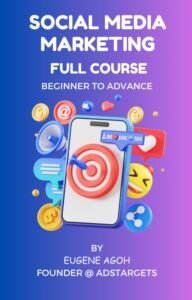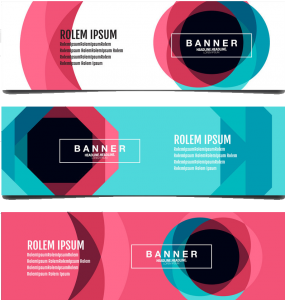There’s no denying it, publishers are losing billions to ad blockers every year. For websites that rely heavily on ad-driven monetization, this challenge can quickly turn into a financial nightmare. That’s why adopting ads bypass ad-block technology has become essential for anyone looking to secure their revenue stream and sustain long-term growth.
Ad blocking is no longer a niche concern; it’s mainstream. In 2020 alone, publishers lost an estimated $12.12 billion in ad revenue due to ad blockers. That’s money that could have supported creators, journalists, and small publishers working hard to keep their platforms running. To counter this, many online publishers are now turning to advanced tools and recovery systems designed to bypass ad-block detection while maintaining user trust and delivering non-intrusive ad experiences.
By integrating ads bypass ad-block technology, publishers can recover lost impressions, boost their average revenue per visitor (ARPV), and strengthen relationships with loyal users through first-party data and more transparent ad practices. This approach not only restores lost revenue but also ensures a smoother, ad-friendly experience for visitors who might otherwise block ads entirely.
But before diving into recovery strategies, it’s crucial to understand how ad blockers actually work — because that knowledge influences every part of your monetization strategy, from ad server selection to ad format preferences. Once you understand the mechanics, you can take smarter steps to make your ads more resilient, relevant, and revenue-focused.
Let’s explore how you can use ads bypass ad-block technology to protect your earnings, regain lost ground, and future-proof your monetization model.
Table of Contents
ToggleHow Do Ad Blocking Extensions Work?

Ad blockers are browser extensions designed to block or replace advertorial content before it reaches your audience. They’re the reason around 25% of ads never connect with their target consumers, resulting in wasted impressions and lost revenue for publishers. These extensions rely on two main functions — list filtering and ad blocking — to identify and remove ads from web pages.
To make web browsing faster, safer, and less disruptive, ad blockers are either built into browsers (like Chrome’s Better Ads Guidelines) or installed as add-ons such as Adblock or Adblock Plus. When a user loads a webpage, the ad blocker quickly scans the site’s code, looking for patterns, scripts, or elements that match its pre-set blocklists. Once it identifies them, it prevents those ad elements from loading — effectively stripping the page of its ad content.
Here’s how the process typically works:
#1. Blocking Ads:
The primary job of any ad blocker is to stop intrusive or flashy ads — like pop-ups, autoplay videos, pop-unders, and large banner ads — from appearing on a webpage.
#2. Element Blocking:
Some ad blockers go further by disabling specific elements of a website, such as heavy images, fonts, or external scripts that slow down loading speed or trigger ads.
#3. Disabling Social Sharing Buttons:
Many websites add social media buttons for sharing content, but ad blockers can cut off these connections, limiting interaction and engagement from social platforms.
#4. Disabling Tracking:
A major reason people install ad blockers is privacy. These extensions can disable tracking scripts that collect user data, helping ensure a more private browsing experience.
#5. Domain Blocking:
Ad blockers maintain a “blocklist” — a database of domains known to host ads or malicious content. Any request made to those domains is automatically stopped.
#6. Serving Replacement Ads:
Interestingly, some popular ad blockers allow certain “acceptable ads” to display in exchange for revenue. The ad blocking company takes a small share of the publisher’s ad income while allowing limited, less intrusive ads to appear.
For publishers, this creates a serious challenge: fewer visible ads mean lower revenue. That’s where ads bypass ad-block technology comes in. This innovative solution helps publishers recover lost impressions by displaying ads that can’t be detected or blocked by conventional ad blockers.
By integrating ads bypass ad-block technology, publishers can restore monetization opportunities, keep their ads compliant, and maintain user trust without disrupting the browsing experience. It’s a smart way to adapt to changing audience behavior while ensuring your content continues to generate revenue — even in a world filled with ad-blocking tools.
Strategies

# Strategy 1: Adopt Server-Side Ad Insertion
One of the most effective ways to deal with ad blockers today is by using Server-Side Ad Insertion (SSAI) — a smart technology that merges ads with video content directly at the server or CMS level instead of inside the browser.
Here’s how it works: rather than sending a separate ad request to the browser (which ad blockers can easily detect and stop), SSAI stitches the ads right into the video stream itself. This way, the ad becomes part of the content — invisible to ad blockers.
For instance, when two users are watching the same movie on an OTT platform, they might both see different ads tailored to their preferences — but neither user’s ad will be interrupted or blocked. That’s because the ad server embeds the ad into the video content before sending it to the player via the CDN (Content Delivery Network).
Since the ads bypass ad-block technology through SSAI, the ad blockers can’t tell the difference between what’s part of the video and what’s an ad. This eliminates the traditional ad request process entirely, ensuring smooth, uninterrupted playback.
Publishers and advertisers have been turning to SSAI more aggressively in recent years, especially as they lose significant revenue to ad-blocking software. Beyond safeguarding earnings, it also creates a much better viewing experience — no buffering, no pop-ups, and no awkward ad breaks.
In essence, ads bypass ad-block technology using SSAI by blending seamlessly with the video content, allowing publishers to deliver personalized ads that don’t disrupt the user experience. It’s a win-win: users enjoy cleaner playback, and publishers get their ad impressions (and revenue) back.
# Strategy 2: Publisher’s Savior — The Power of Acceptable Ads
When it comes to balancing user experience and ad revenue, Acceptable Ads have become the middle ground every publisher needs. They’re designed to bridge the gap between user preferences and monetization — allowing websites to display non-intrusive, user-friendly ads that don’t frustrate readers or trigger ad-blocking software.
The concept was introduced by Eyeo, the same organization behind AdBlock Plus. They launched the Acceptable Ads Initiative to support publishers while respecting users’ desire for a cleaner, less disruptive browsing experience. These ads follow specific standards set for and by ad-block users, ensuring that only non-intrusive formats get through.
And the results speak for themselves — in 2021 alone, over 95% of users opted in for acceptable ads, with more than 216 million ad-block users allowing them between 2021 and 2022. That’s proof that when done right, ads bypass ad-block technology not by tricking users, but by gaining their approval.
Acceptable Ads Initiative in Numbers
The latest Acceptable Ads standards introduced four new, clean, and content-friendly formats that can be safely displayed without triggering ad blockers:
#1. In-content between paragraph, static – 728×90
#2. In-content between paragraph, static – 840×150
#3. In-content ad – 300×250, at the end of images (page 4 of 4), static
#4. In-content ad – 468×400, at the end of images (page 4 of 4), static
For mobile, Eyeo set clear rules to ensure ads stay subtle and relevant:
#1. Static mobile ads can appear anywhere on a page.
#2. Small sticky ads are allowed at the bottom of the screen — no other formats permitted.
#3. Large native ads can be placed below the primary content.
#4. Ads shouldn’t take up more than 50% of the visible screen.
#5. Sticky ads must stay within a height of 75px.
The mobile ad below the main content can cover up to 100% of the screen space.
This thoughtful approach helps publishers recover lost revenue while maintaining trust with their audience. By aligning with Acceptable Ads, publishers don’t need to overhaul their site or rely on intrusive pop-ups to earn. Instead, they can leverage ads that bypass ad-block technology ethically — keeping both users and advertisers satisfied.
In short, Acceptable Ads are the unsung heroes for publishers. They respect user control, maintain the integrity of web content, and offer a steady, compliant way to earn back ad revenue that would otherwise be lost to blockers.
#. Strategy 3: Native Advertising to the Rescue

With ad blockers cutting into valuable impressions and reducing publisher revenue, many advertisers are moving away from flashy banner ads and embracing native advertising — a smarter, smoother, and more effective approach. And the numbers tell the story clearly: native ad spending skyrocketed from $47.33 billion in 2020 to $57.27 billion in 2021, and it’s projected to soar beyond $400 billion by 2025.
So, what makes native advertising so powerful? It’s simple — it blends perfectly with the content. Instead of interrupting the user’s browsing flow, native ads feel like a natural part of the platform, appearing as “Sponsored” or “Promoted” content rather than aggressive pop-ups or banners. This not only improves engagement but also helps ads bypass ad-block technology by fitting seamlessly into the page without triggering ad filters.
Native Advertising vs. Traditional Banners

Native ads can appear in multiple forms — from in-feed social media ads to sponsored articles and branded content. Because they match the look and tone of the platform, they don’t annoy users or slow down the website. Even better, native ads can run through server-side integration, meaning they don’t rely on ad tags embedded in the webpage. This makes them faster, safer, and harder for ad blockers to detect — another clever way ads bypass ad-block technology while preserving user experience.
But beyond the technical side, native ads also build something banner ads rarely do — trust. Since they appear as part of the user’s reading or scrolling experience, they feel less intrusive and more authentic. That sense of relevance and subtlety strengthens audience engagement and enhances brand perception.
In a digital world where users have grown tired of disruptive ads, native advertising stands out as a win-win solution. It keeps your site clean and engaging, drives steady revenue, and gives advertisers the visibility they need — all without annoying your audience or triggering their ad blockers.
# Strategy 4: Choose the Right Ad Tech Provider

One of the smartest ways to recover lost ad revenue caused by ad blockers is to partner with a reliable ad tech provider that focuses on viewability, reinsertion technology, and user experience. The right provider won’t just help you display more ads — they’ll help your ads bypass ad-block technology while keeping your audience engaged and satisfied.
A good ad tech partner understands that user experience is everything. Instead of bombarding visitors with intrusive pop-ups or autoplay videos, they offer ad formats that feel organic and non-disruptive. This makes users less likely to use ad blockers — and more likely to interact with your content. When ads are designed to blend smoothly with the site layout and genuinely add value, users don’t see them as interruptions but as part of the browsing journey.
What’s more, advanced ad tech companies now specialize in ad reinsertion technologies that detect blocked ads and replace them with alternative formats users can still see — without breaking site functionality or design. This is one of the most efficient ways ads bypass ad-block technology, helping publishers regain revenue that would otherwise be lost.
But a great ad tech provider does more than just place ads. They invest in SEO, keyword optimization, social media visibility, and smart ad content strategies to make sure your ads reach the right audience at the right time. It’s not just about displaying ads — it’s about building your brand presence and long-term revenue sustainability.
In short, choosing the right ad tech partner can completely redefine how you monetize your website. By combining user-first ad formats with ad-block-resistant technology, you can protect your revenue stream and keep your audience coming back for more.
# Strategy 5: Leverage Programmatic Audio

If you’re a publisher looking to reduce the effects of ad blockers on your revenue, programmatic audio advertising is one of the smartest solutions to consider. Traditional display and video ads are the main targets of ad-block extensions, but ads bypass ad-block technology when they exist in audio form — simply because most ad blockers aren’t built to detect or filter sound-based formats.
Think of podcasts, music streaming platforms, and audio blogs — these channels create fresh opportunities for publishers to monetize without worrying about ad blockers interfering. Programmatic audio ads can be inserted seamlessly during podcast breaks or within music streams, allowing brands to reach highly engaged audiences while publishers maintain their revenue flow.
The beauty of programmatic audio is that it uses automation to buy and sell ad space in real time. This means that the right ad is delivered to the right listener at the right moment. It’s precise, efficient, and fully personalized — exactly what advertisers love and what helps ads bypass ad-block technology without breaking the user experience.
Publishers can also go a step further by integrating audio placements directly into their websites and selling audio inventory through a supply-side platform (SSP). This not only opens up a new revenue channel but also diversifies ad formats, ensuring they’re not fully reliant on display ads that ad blockers can easily filter.
In essence, programmatic audio is more than just a workaround — it’s a powerful addition to your monetization strategy. It provides a creative, user-friendly way to engage audiences while keeping your income stream steady, even in a world dominated by ad-blocking software.
A Recap
Let’s quickly recap the five most effective strategies you can start using right now to fight ad blockers and recover your lost revenue:
#1. Use Server-Side Ad Insertion (SSAI) – Blend your ads seamlessly into video content so they become part of the stream itself. This method ensures ads bypass ad-block technology since ad blockers can’t distinguish between video and commercial content. Many ad platforms, including Epom, offer this as an advanced add-on.
#2. Join the Acceptable Ads Initiative – Instead of losing impressions completely, participate in programs that show lighter, non-intrusive ads to users. More than 95% of AdBlock users have opted into this initiative, making it a reliable way to keep revenue flowing while respecting user experience.
#3. Adopt Native Advertising – Replace disruptive banners with native placements that blend naturally into your website’s content. Native ads maintain engagement and trust while allowing ads bypass ad-block technology since they appear as part of the user’s browsing experience.
#4. Choose the Right Ad Tech Provider – Work with an ad platform that supports both SSAI and native ads while ensuring smooth, user-friendly delivery. The right ad tech partner helps you maintain flawless ad visibility without frustrating visitors.
#5. Leverage Programmatic Audio – Audio ads are harder for blockers to detect because they aren’t visual. By creating audio placements on your site or app and selling inventory through a supply-side platform, you can monetize without interruption.
At the end of the day, ad blocking doesn’t have to be a death sentence for publishers. With the right mix of smart tools and adaptive strategies, you can maintain a steady, sustainable revenue stream. The key lies in evolving — not eliminating ads, but delivering them in smarter, more user-friendly ways that both protect your income and respect your audience.








